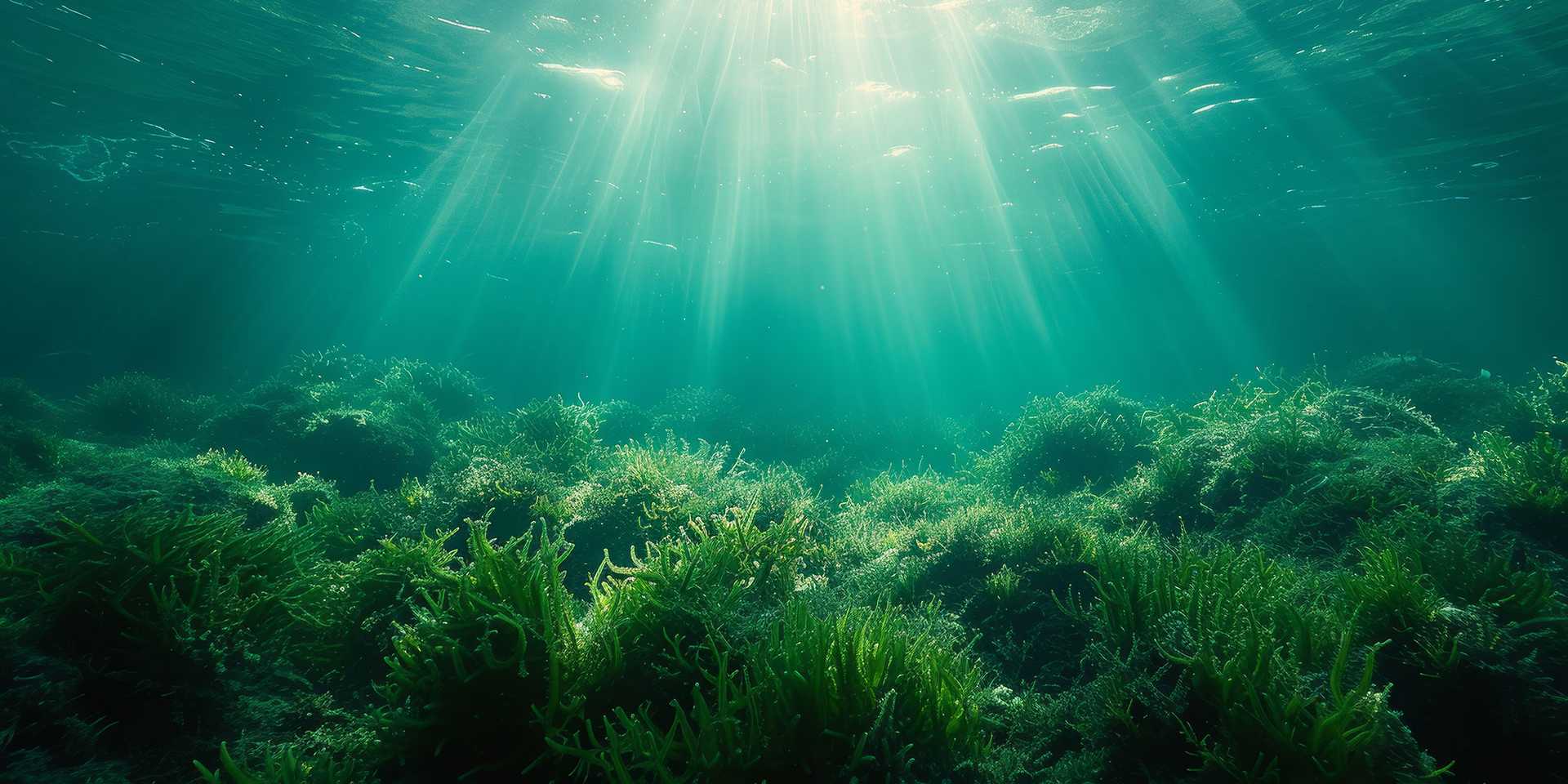Understanding CO2 fixations in oceans
Marine algae are vital in capturing CO2 from the atmosphere. As CO2 levels rise, we need to understand how algae adapt, which could influence their productivity and the ocean's ability to absorb CO2.

In brief
Scientists discovered a new way to measure how much effort algae put into concentrating CO2 for photosynthesis. Surprisingly, even in ideal lab conditions, algae do not always fully use this mechanism. This suggests that algae balance the energy they spend on concentrating CO2 with other needs, even when conditions are perfect for growth. This finding was unexpected because it was previously thought that algae would maximise this mechanism when conditions were optimal.
Marine algae play a critical role in global CO2 fixation, and they play an important role in the ocean’s uptake of anthropogenic CO2. Because their photosynthetic enzymes evolved when the atmospheric CO2 concentration was much higher over a billion years ago, today most algae invest a large amount of energy to transport carbon and elevate the concentration of CO2 at the active site of the enzymes. It is thought that rising atmospheric CO2 levels might reduce the need for such a large energy investment and might benefit algal productivity in some areas of the ocean. But because this system of carbon concentration takes place deep in the cell and is largely unobservable, we don’t have a good grasp of how extensively it is used in populations in different parts of the ocean today, where the cells must balance their energy allocation to deal with multiple challenges.
In a recently published study in the Proceedings of the National Academy of Sciences (PNAS) scientists from the Geological Institute of ETH Zurich were looking to decode a chemical indicator – the relative abundance of two stable isotopes of hydrogen in algal lipids – so that they can use this indicator to better understand the efficiency of photosynthesis in other settings where they cannot easily manipulate or probe algae in the way they do in lab experiments. They were working with the hydrogen isotope ratio of lipids produced by the algae, because these lipids can easily be extracted from natural populations of algae in aquaculture, in the ocean, and these lipids are even accumulated at the seafloor after the algae have died so they can investigate even the behavior of photosynthetic processes in the past under different environmental conditions.
Previously, there has been wide interest in using the ratio of two hydrogen isotopes (²H/¹H) in algal lipids, as a passive indicator of the ²H/¹H ratio of the ocean. The hydrogen isotope ratio in the ocean is controlled by the balance of evaporation from and precipitation to, seawater in a given region and varies with salinity. This interest was focused on using lipids from fossil algae to estimate the past changes in salinity of different regions of the ocean to better understand the freshwater cycle in different climates. However, that interpretive framework kept producing paradoxes of really different responses in algal lipids collected from natural ocean populations, compared to laboratory cultures where a single environmental variable like salinity was manipulated.
To better decode this indicator, the researchers grew the algae under carefully controlled conditions in the laboratory and for the first time evaluated how the CO2 concentration affected the hydrogen isotope ratio. In a second phase of the study, they developed a comprehensive new model of the cellular conversions of hydrogen in different parts of the photosynthetic cycle, and how these would affect the hydrogen isotope ratio. This new model allowed them to diagnose the biochemical variables encoded in the chemical indicator and show that it is very sensitive to the concentration of CO2 achieved at the site of the photosynthetic enzyme Rubisco.
In a next step it will be important to investigate if the regulation of the carbon concentrating mechanism is similar in other types of marine phytoplankton.
Reference
Ismael Torres-Romero, Hongrui Zhang, Reto S. Wijker, Alexander J. Clark, Rachel E. McLeod, Madalina Jaggi, and Heather M. Stoll. Hydrogen isotope fractionation is controlled by CO2 in 6 coccolithophore lipids. Proceedings of the National Academy of Sciences. 121(26). external pagedoi.org/10.1073/pnas.2318570121
